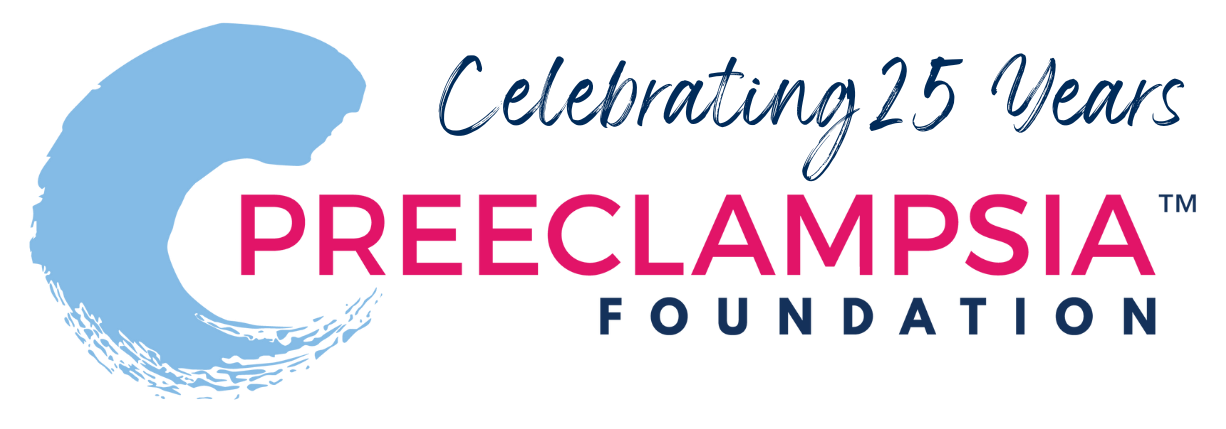
Is Predicting Preeclampsia a Pipe Dream?
If there were a way to learn your risk of developing preeclampsia in the first trimester of your pregnancy, would you want to know? What if that test result wasn’t 100% accurate?
We asked almost 1,000 women – some who had had preeclampsia and some who had not – these and other questions to better understand patient preferences around the need for screening (or prediction) tests. Eighty-eight percent of women with a history of preeclampsia agreed that an early test was important, even if it was imperfect. Even those without a history of preeclampsia – 74% – still agreed it would be important. Additional questions drilled down on women’s feelings about a screening test and its likely impact on:
- prenatal care,
- anxiety versus peace of mind
- medical choices
- how such a test might have impacted a previous outcome.
 Answers to all of these questions provided shading to a rich portrait of patient preferences. Overall, those women with and without a history of preeclampsia felt that information was important, regardless of whether there were a known intervention.
Answers to all of these questions provided shading to a rich portrait of patient preferences. Overall, those women with and without a history of preeclampsia felt that information was important, regardless of whether there were a known intervention.
That’s where patients and providers tend to differ. Many physicians argue that such a test is not necessary, since there is no definitive intervention to prevent preeclampsia from subsequently occurring.
“What is the value of having a screening test without having a proven effective intervention that would occur on the basis of the screening test result?” asks Dr. John Repke, Chairman of the Department of Obstetrics and Gynecology, Milton S. Hershey Medical Center, Penn State University.
Health economists are also challenged by the cost of such a test for all four million women who will deliver in a single year – generally considered a low risk population - against the number of women for whom the test results will prove instructive, guiding the course of their prenatal care and ultimately improving outcomes.
Other doctors suggest otherwise.
“When you have a clinic filled with routine prenatal visits, a test that heightens observation has value. In the case of pregnancy it may mean moving the routine patient to the scrutiny of a maternal-fetal medicine specialist,” remarked Dr. Marshall Lindheimer, professor emeritus in the Departments of Obstetrics & Gynecology and of Medicine at the University of Chicago and a nephrologist who spent his career consulting on expectant mothers with preeclampsia. “When such a test becomes available, and is not prohibitively costly, I see utility. However,” he cautions, “if the test were negative in a high-risk patient, we would not want to bring our guard down.”
Another caution is offered by Dr. Baha Sibai, an internationally recognized researcher and clinician in maternal-fetal medicine at The University of Texas Health Science Center at Houston (UTHealth) Medical School. He remarked, “With a test that delivers 5% ‘false positives' – that is, the test indicates the woman will get preeclampsia, but she doesn’t – there is a fear it will generate unnecessary intervention.” The greatest concern for physicians is unnecessarily delivering a baby prematurely. In light of recent messaging about the value of going to 39 weeks, the harm of a much earlier delivery when it is not needed, is even greater.
Most agree that the definitive answer will only come with a real world application.
PerkinElmer, a global leader and innovator in the field of prenatal screening for more than thirty years, two days ago announced the first available early onset preeclampsia screening test in the United States. The PreeclampsiaScreen™ | T1 serum screening test enables physicians to more precisely detect asymptomatic patients in the first trimester of pregnancy who are at high risk for developing the dangerous condition, allowing for earlier identification, management and intervention.
Early onset preeclampsia is a potentially serious condition that affects 0.5% of all pregnancies (approximately 20,000 annually in the US alone), often contributing more to the pregnant mother's and baby's risks of morbidity and mortality than does the late form of the disorder, according to a press release issued by the company.
PreeclampsiaScreen™ | T1 is administered during the first trimester of pregnancy through a simple blood test to detect three biochemical markers in the mother's blood: PAPP-A (pregnancy-associated plasma protein-A); PlGF (placental growth factor) and AFP (alpha fetoprotein) that, when evaluated collectively with personal demographic data, indicate an individual’s risk of developing early onset preeclampsia.
The maximum strength of the test comes in settings where it is combined with two additional biophysical measurements: Mean Arterial Pressure (MAP) and uterine artery Doppler pulsatility index (UtAD-PI). MAP is defined as the average arterial blood pressure during a single cardiac cycle. The reason this is so important is that it reflects the hemodynamic perfusion pressure of the vital organs. Without the accurate use of those technologies contributing to the test’s algorithm, the accuracy of the risk assessment drops off considerably – from 91 percent to 60 percent.
Proponents of the test say the value of an early screening test is to initiate treatment with low dose aspirin (LDA, a.k.a., baby aspirin) in those women identified at high risk of developing preeclampsia.
“However, this treatment is effective only if begun early in pregnancy. That is why first trimester screening is such a critical component of preeclampsia prevention," explains Dr. Jiri Sonek, MD RDMS, President, Fetal Medicine Foundation USA, and Adjunct Professor, Department of Obstetrics and Gynecology from Wright State University.
Indeed, some studies have found low dose aspirin to be effective in a small number of women at high risk for developing the disease. As a result of that and the pharmacological understanding that LDA is a low risk (not “no risk”) intervention, some experts agree that treating high risk women who do not have certain blood clotting disorders is worthwhile. The prevailing attitude is “It probably won’t hurt and might help.” The challenge, of course, is determining who is at high risk of developing preeclampsia. Some indicators are obvious: previous history of preeclampsia, chronic hypertension and diabetes. But as many readers know, you can have none of those risk factors and still develop preeclampsia.
That’s where a screening test could be useful.
In 2009, authors Richard Levine and Marshall Lindheimer wrote: “Clinically useful prediction tests should ideally be simple, rapid, noninvasive, inexpensive, easy to perform early in gestation, and should impose minimal discomfort or risk. The technology should be widely available and the results valid, reliable, and reproducible. Useful prediction of preeclampsia would also require a very high likelihood ratio for a positive test (>15), as well as a very low likelihood ratio for a negative result (<0.1).”
They go on to explain that studies by Poon, et al., upon which the PerkinElmer test is based, found a 5% false-positive rate for normotensive deliveries, 476 women tested positive for early preeclampsia (of whom 32 actually developed early disease) and 444 did not. Of the 7,321 women who tested negative for early preeclampsia, 2 developed early disease and 7,319 did not. Thus, the sensitivity of the prediction model for early preeclampsia at a 5% false-positive rate for normotensive deliveries was 32 of 34, or 94.1%, and the specificity was 7319 of 7319+444, or 94.3%. The likelihood ratio for a positive test was 16.5 and for a negative test was 0.06, easily fulfilling the World Health Organization criteria for a clinical prediction test.
However, enthusiasm is tempered somewhat as the field awaits these results to be tested by other researchers using a different population of women. (That is to say, the results must prove reproducible.)
And in poor countries where preeclampsia kills significantly more women, the need to identify women at greatest risk and immediately provide limited resources could save a huge number of lives. In these low resource settings, the test’s cost and access are key issues.
Due to the scientific community’s growing understanding of what is happening at a molecular level in women with preeclampsia, predictive and diagnostic biomarkers have been popular subjects at medical science meetings and in peer-reviewed journals. Researchers also need screening tests that will accurately group clinical test subjects into high or low risk categories. Besides the recent introduction of the PerkinElmer test, other investigators are closing in on metabolic and other biomarkers that may predict who will get preeclampsia and who won’t.
Whether a pregnant woman would opt to take a screening test that could determine her risk, and whether she would change her health care practices or care provider if she received a clear determination of risk for preeclampsia from such a test, are two big questions that still face the research community and companies developing such tests.
For patients, the preference for a screening test seems clear.
“An expectant mother should be able to be on ‘high alert’ status without having to first endure a tragic pregnancy as a red flag,” said Eleni Tsigas, executive director of the Preeclampsia Foundation. “Most pregnancies are healthy and uncomplicated…until they’re not. And then it’s too late for the ‘what should we have done’ analysis,” said Tsigas.
Having screening tests represents a great stride toward early identification of high risk pregnancies in order to increase surveillance and administer low dose aspirin, but there are still many challenges to effectively treat women who will develop preeclampsia. Research must push forward to find better interventions that can ensure optimal health outcomes for mom and baby.
Related Articles

Ánimo y cuídate: la preeclampsia puede estar asociada con enfermedades cardíacas y accidentes cerebrovasculares más adelante en la vida Descargue nuestra hoja informativa

Eclampsia is a very serious complication of preeclampsia characterized by one or more seizures during pregnancy or in the postpartum period.

La preeclampsia, en todas sus formas, puede requerir muchos análisis, tanto durante como después del embarazo. ¿Alguna vez se preguntó por qué el proveedor de atención médica le solicita tantos anális...

El embarazo es un momento ideal para familiarizarse con su presión arterial. Aquí encontrará todo lo que necesita saber sobre cómo tomarse la presión arterial en casa.

Melbourne, FL – September 17 , 2024 – The Preeclampsia Foundation, in partnership with the International Society for the Study of Hypertension in Pregnancy (ISSHP) and Society for Ma...

Resultados de varios estudios apoyan la hipótesis de que el estrés causado por un embarazo y parto traumáticos puede en muchas ocasiones anular la habilidad de salir adelante emoc...

Is there a connection between maternal diet and preeclampsia? The PRECISE Network research team and I recently completed an evidence review to compile information on maternal nutritional factors that...

What you’ll learn in this article: Many risk factors contribute to an individual’s chance of getting preeclampsia. These risk factors may be genetic, physical, environmental, and even s...

Question: Progesterone supplementation - first trimester and beyond - can it help the vascular constriction by keeping the smooth muscle relaxed (17HP shots), and is it associated with early supplemen...

